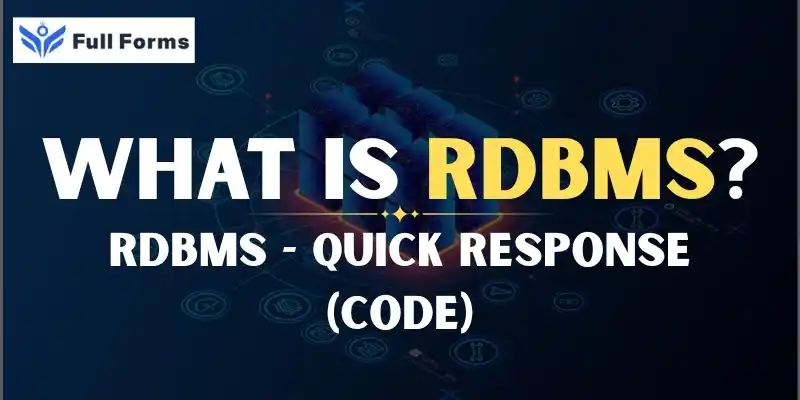Relational Database Management System
(RDBMS)

Description
In today's digital world
Data is everywhere. A lot of data is used and stored by businesses, schools, hospitals, and even social media sites every day. But how do you keep track of, store, and get to all of this data in a tidy way? The Relational Database Management System (RDBMS) is the answer.
What is an RDBMS?
An RDBMS is a type of software that lets you keep and sort data in tables. The system is called "relational" because the tables are linked to each other. Each table has rows and columns, where:
- Rows are records (or data entries).
- Columns are fields or characteristics.
For example, one table in a school database might have information about students and another table might have their grades. You can connect the two tables by using a field that is the same in both, like "Student ID."
Some well-known RDBMS programmes are:
- MySQL
- PostgreSQL
- Oracle Database
- Microsoft SQL Server
- IBM DB2
How RDBMS Works
RDBMS uses Structured Query Language (SQL) to manage and work with the data. SQL lets people do the following:
- Create new information
- Read the existing data
- Update the information
- Delete information
These are called CRUD operations: Create, Read, Update, and Delete. The system keeps the data safe, organised, and easy to get to when you need it.
Key Features of RDBMS
- Data Integrity: Rules and constraints like Primary Key and Foreign Key ensure data accuracy.
- Relationships: Tables are connected through keys to maintain relational structure.
- User Access: Role-based access lets certain users read, write, or delete data.
- Multi-user Support: Multiple users can access the database at the same time without conflict.
- Backup and Restore: Most RDBMS support data backup and restore in case of failures.
Benefits of RDBMS
- Easy to Use: Tables are user-friendly and logical.
- Efficient Management: Handles large datasets easily.
- Scalability: Grows with your data and application.
- Consistency: Ensures reliable and accurate data.
- Security: Built-in user controls and permissions.
How RDBMS is Used in Real Life
- Banks: To manage customer accounts and transactions.
- Online Shopping Sites: For tracking orders, inventory, and payments.
- Educational Institutes: To manage student records and grades.
- Hospitals: For maintaining patient data and medical records.
- Social Media Platforms: To store user profiles, posts, and messages.
Difference Between DBMS and RDBMS
| Feature | DBMS | RDBMS |
|---|---|---|
| Data Storage | Stored in files | Stored in tables |
| Relationships | No links | Uses relationships between tables |
| Data Integrity | Low | High with constraints |
| Examples | MS Access | MySQL, Oracle, SQL Server |
Conclusion
A Relational Database Management System (RDBMS) is a great way to store and organise data in a structured format. Using tables, relationships, and SQL, it allows users to manage data efficiently and securely. Whether it's a small shop or a large enterprise, RDBMS is the backbone of modern data management.
